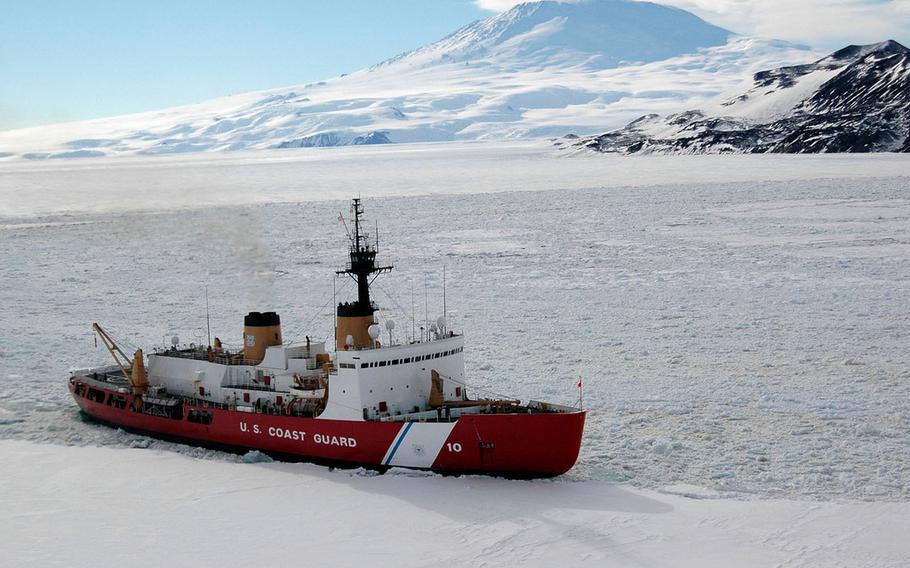
The U.S. Coast Guard’s Polar Star plows through ice in Antarctic waters, Feb. 15, 2006. (U.S. Coast Guard)
The U.S. Coast Guard’s heavy polar ice breaker is headed to Antarctic waters to assist Russian and Chinese vessels trapped in ice there.
At the request of Australia’s Maritime Safety Authority, the USCG’s Polar Star left Sydney on Sunday to reach the Russian research ship Akademik Shokalskiy and the Chinese ship Xue Long.
The Akademik Shokalskiy became trapped Dec. 24 in Commonwealth Bay, almost directly south of Australia. The Xue Long, also an ice breaker, came to its rescue and successfully transported passengers via helicopter, but reported Friday that it too had become clogged by ice.
There are more than 120 crew members aboard the two trapped vessels, according to the Associated Press, but they are well provisioned and in no immediate danger.
The Coast Guard responded to the Jan. 3 request for assistance after the AMSA determined there was “sufficient concern that the vessels may not be able to free themselves from the ice,” according to a USCG release.
The Chinese and Russian governments also requested the U.S. assistance, according to the USCG.
AMSA estimates that it will take the 399-foot-long Polar Star a week to reach the trapped ships.
The Polar Star—the Coast Guard’s only active heavy polar ice breaker—is able to continuously break 6 feet of ice at a speed of 3 knots. Its diesel-electric and gas powered propellers can produce up to 75,000 horsepower.
“The U.S. Coast Guard stands ready to respond to Australia’s request,” said Vice Adm. Paul F. Zukunft, commander of Coast Guard Pacific Area, in an issued release. “Our highest priority is safety of life at sea, which is why we are assisting in breaking a navigational path for both of these vessels.
The Polar Star left its home port of Seattle in early December for its original mission to break a channel through the sea ice of McMurdo Sound and resupply the U.S. Antarctic Program’s base there on Ross Island. The ship is one of the largest in the Coast Guard and recently completed its three-year and $90 million overhaul.
suzuki.toshio@stripes.com Twitter: @ToshJohn